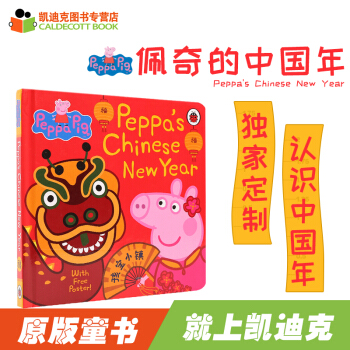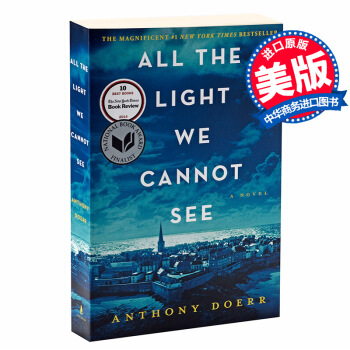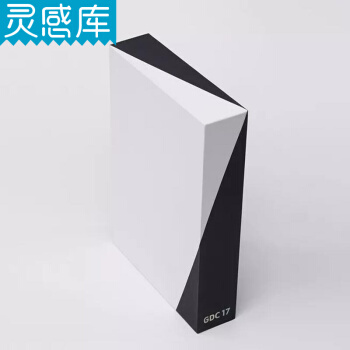![Stuart Little, 60th Anniversary Edition 精灵鼠小弟,六十周年版 英文原版 [平装] [8岁及以上]](https://pic.windowsfront.com/19009258/550be6b4N22fc6802.jpg)

具体描述
内容简介
A fully colorized paperback edition of E.B. White's classic novel about one small mouse on a very big adventure!Stuart Little is no ordinary mouse. Born to a family of humans, he lives in New York City with his parents, his older brother George, and Snowbell the cat. Though he's shy and thoughtful, he's also a true lover of adventure.
Stuart's greatest adventure comes when his best friend, a beautiful little bird named Margalo, disappears from her nest. Determined to track her down, Stuart ventures away from home for the very first time in his life. He finds adventure aplenty. But will he find his friend?
《精灵鼠小弟》是美国作家E·B·怀特(1899--1985)所著的三部被誉为“二十世纪读者最多、最受爱戴的童话”之一。
利特尔家的第二个孩子斯图尔特生下来只有两英寸高,模样活脱脱就是一只小老鼠。这位老鼠小弟心地善良、聪明伶俐,一家人里头,除了那只名叫“野茉莉”的猫,没有不喜欢它的。斯图尔特最要好的朋友是寄居在他们家的小鸟玛加洛,为了让美丽的玛加洛不受“野茉莉”的欺负,鼠小弟可真是鼓足了勇气,动足了脑筋。他发誓要把玛加洛找回来,于是开动玩具车就上了路。一路上,险情趣事层出不穷,鼠小弟历尽千辛万苦……鼠小弟最后到底有没有找到玛加洛呢?你一定猜不着。好莱坞根据本书改编的电影,让倔强而可爱的鼠小弟征服了全世界。
作者简介
E. B. White, the author of such beloved classics as Charlotte's Web, Stuart Little, and The Trumpet of the Swan, was born in Mount Vernon, New York. He graduated from Cornell University in 1921 and, five or six years later, joined the staff of The New Yorker magazine, then in its infancy. He died on October 1, 1985, and was survived by his son and three grandchildren.Mr. White's essays have appeared in Harper's magazine, and some of his other books are: One Man's Meat, The Second Tree from the Corner, Letters of E. B. White, Essays of E. B. White, and Poems and Sketches of E. B. White. He won countless awards, including the 1971 National Medal for Literature and the Laura Ingalls Wilder Award, which commended him for making a “substantial and lasting contribution to literature for children.”
During his lifetime, many young readers asked Mr. White if his stories were true. In a letter written to be sent to his fans, he answered, “No, they are imaginary tales . . . But real life is only one kind of life—there is also the life of the imagination.”
Garth Williams began his work on the pictures for the Little House books by meeting Laura Ingalls Wilder at her home in Missouri, and then he traveled to the sites of all the little houses. His charming art caused Laura to remark that she and her family “live again in these illustrations.”
E·B·怀特,美国当代著名散文家、评论家,以散文名世,“其文风冷峻清丽,辛辣幽默,自成一格”。生于纽约蒙特弗农,毕业于康奈尔大学。作为《纽约客》主要撰稿人的怀特一手奠定了影响深远的 “《纽约客》文风”。怀特对这个世界上的一切都充满关爱,他的道德与他的文章一样山高水长。除了他终生挚爱的随笔之外,他还为孩子们写了三本书:《斯图尔特鼠小弟》(又译《精灵鼠小弟》)、《夏洛的网》与《吹小号的天鹅》,同样成为儿童与成人共同喜爱的文学经典。
内页插图
精彩书评
Narrator Julie Harris draws upon her extraordinary acting talents to raise this much-loved tale of a teeny, tiny explorer and his oversized adventures to new heights. "Stuart put on his sailor hat and his sailor suit, took his spy glass down from the shelf and set for a walk full of the joy of life and the fear of dogs." Skipping from one precarious perch to the next, the diminutive wanderer makes new friends, meets old ones, and shares his lust for life with listeners of all ages. Harris's clever, lyrical narration is wonderfully evocative and perfectly captures the charming yet soulful spirit of E.B. White's classic children's tale. (Running time: 2 hours, 2 cassettes)--George Laney
精彩书摘
In the DrainWhen Mrs. Frederick C. Little's second son arrived, everybody noticed that he was not much bigger than a mouse. The truth of the matter was, the baby looked very much like a mouse in every way. He was only about two inches high; and he had a mouse's sharp nose, a mouse's tail, a mouse's whiskers, and the pleasant, shy manner of a mouse. Before he was many days old he was not only looking like a mouse but acting like one, too-wearing a gray hat and carrying a small cane. Mr. and Mrs. Little named him Stuart, and Mr. Little made him a tiny bed out of four clothespins and a cigarette box.
Unlike most babies, Stuart could walk as soon as he was born. When he was a week old he could climb lamps by shinnying up the cord. Mrs. Little saw right away that the infant clothes she had provided were unsuitable, and she set to work and made him a fine little blue worsted suit with patch pockets in which he could keep his handkerchief, his money, and his keys. Every morning, before Stuart dressed, Mrs. Little went into his room and weighed him on a small scale which was really meant for weighing letters. At birth Stuart could have been sent by first class mail for three cents, but his parents preferred to keep him rather than send him away; and when, at the age of a month, he had gained only a third of an ounce, his mother was so worried she sent for the doctor.
The doctor was delighted with Stuart and said that it was very unusual for an American family to have a mouse. He took Stuart's temperature and found that it was 98.6, which is normal for a mouse. He also examined Stuart's chest and heart and looked into his ears solemnly with a flashlight. (Not every doctor can look into a mouse's ear without laughing.) Everything seemed to be all right, and Mrs. Little was pleased to get such a good report.
"Feed him up!" said the doctor cheerfully, as he left.
The home of the Little family was a pleasant place near a park in New York City. In the mornings the sun streamed in through the east windows, and all the Littles were up early as a general rule. Stuart was a great help to his parents, and to his older brother George, because of his small size and because he could do things that a mouse can do and was agreeable about doing them. One day when Mrs. Little was washing out the bathtub after Mr. Little had taken a bath, she lost a ring off her finger and was horrified to discover that it had fallen down the drain.
"What had I better do?" she cried, trying to keep the tears back.
"If I were you," said George, "I should bend a hairpin in the shape of a fishhook and tie it onto a piece of string and try to fish the ring out with it." So Mrs. Little found a piece of string and a hairpin, and for about a half-hour she fished for the ring; but it was dark down the drain and the hook always seemed to catch on something before she could get it down to where the ring was.
"What luck?" inquired Mr. Little, coming into the bathroom.
"No luck at all," said Mrs. Little. "The ring is so far down I can't fish it up."
"Why don't we send Stuart down after it?" suggested Mr. Little. "How about it, Stuart, would you like to try?"
"Yes, I would," Stuart replied, "but I think I'd better get into my old pants. I imagine it's wet down there."
"It's all of that," said George, who was a trifle annoyed that his hook idea hadn't worked. So Stuart slipped into his old pants and prepared to go down the drain after the ring. He decided to carry the string along with him, leaving one end in charge of his father.
"When I jerk three times on the string, pull me up," he said. And while Mr. Little knelt in the tub, Stuart slid easily down the drain and was lost to view. In a minute or so, there came three quick jerks on the string, and Mr. Little carefully hauled it up. There, at the end, was Stuart, with the ring safely around his neck.
"Oh, my brave little son," said Mrs. Little proudly, as she kissed Stuart and thanked him.
"How was it down there?" asked Mr. Little, who was always curious to know about places he had never been to.
"It was all right," said Stuart.
But the truth was the drain had made him very slimy, and it was necessary for him to take a bath and sprinkle himself with a bit of his mother's violet water before he felt himself again. Everybody in the family thought he had been awfully good about the whole thing.
前言/序言
用户评价
天哪,我简直不敢相信我竟然错过了这本经典的奇妙冒险这么久!我是在一个雨天被这本书深深吸引住的,当时我正心烦意乱地翻找着能让我完全沉浸其中的故事。当我打开这本《精灵鼠小弟》的精装版时,那种老派的、充满怀旧气息的封面设计立刻就抓住了我的眼球。这本书的纸张质量非常棒,拿在手里有一种厚实而踏实的感觉,这让我对即将开始的阅读之旅充满了期待。我得承认,一开始我有点担心,毕竟这是一个关于一只老鼠的故事,总怕会过于幼稚或者情节简单。然而,我很快就被作者构建的那个小小的、却充满无限可能的世界所折服了。故事的节奏把握得极好,既有适合儿童读者轻松跟进的幽默片段,也有触及友谊、勇气和寻找归属感这些深刻主题的时刻。我特别喜欢那种细节描绘,仿佛能闻到小船上弥漫的木屑气味,能感受到车轮碾过鹅卵石的颠簸。这本书展现了一种跨越物种的纯粹善良和智慧,读完后感觉整个世界都变得稍微亮堂了一些。它不仅仅是讲了一个小老鼠的故事,更像是一封写给所有“局外人”的情书,告诉我们即使再微小,也能成就非凡。
评分这本书的叙事方式简直是一场行云流水的文学盛宴,让我这个成年读者都感到无比享受。作者的文字功底深厚得令人惊叹,他用一种近乎诗意的笔触描绘了日常生活中那些被我们习以为常的场景,但经过他的描述,那些场景立刻被赋予了全新的魔力。比如,他描述小主人公第一次乘坐玩具帆船在中央公园的湖面上航行时的那种庄严感和兴奋感,那段文字的画面感太强了,我仿佛能清晰地看到水花溅起,感受到微风吹拂着他小小的胡须。而且,这部作品的幽默感非常高级,它不是那种低俗的插科打诨,而是源于角色个性和情境错位产生的智慧的火花。读到某些对话时,我忍不住会心一笑,那种笑声是发自内心的、温暖的。此外,故事中对于情感的处理细腻得让人动容。它探讨了孤独、渴望被接纳,以及为了所爱之人愿意付出多大的努力。我特别欣赏它如何在保持童趣盎然的同时,巧妙地融入了成年人才能完全体会的那些细微的人性观察。阅读体验是连贯且引人入胜的,让我完全忘记了外界的喧嚣,全神贯注于这只小小身影的大大世界里。
评分我必须说,这本书拥有经久不衰的魅力,这是许多现代作品所欠缺的。它的核心主题非常普世,关乎友谊的建立和维护,关乎在逆境中保持乐观和正直。让我印象深刻的是,作者在处理冲突时,展现出了一种令人耳目一新的成熟度。冲突的解决往往不是依靠武力或戏剧性的意外,而是通过真诚的沟通、细致的观察和坚定的信念。这对于引导年轻读者形成健康的价值观非常有帮助。每当主人公面临巨大的挑战时,他总能依靠自己的智慧和身边朋友的支持来克服难关,这给予了读者巨大的精神鼓舞。读完之后,我有一种强烈的冲动,想要立即去帮助身边那些看起来“不太合群”的人,因为我深刻体会到,那些看似与众不同之处,往往隐藏着最闪耀的内在光芒。这本书的语言本身就具有一种洗涤心灵的力量,它教会我们如何用更宽广、更富有同理心的眼光去看待这个世界上的每一个生命体,无论他们多么渺小或异于常人。
评分作为一名对文学装帧略有偏爱的读者,我对这套六十周年版的选材和印刷质量感到非常满意。这本书拿在手里,那种质感就让人心生敬意,感觉像是在触摸一件流传已久的艺术品,而不是快消品。装帧设计上的用心之处,体现在每一个细节:字体的大小和间距经过了精心的排布,使得长时间阅读也不会感到眼睛疲劳,这对于需要家长陪读或者年纪稍大的读者来说至关重要。插图——尽管我不能具体描述它们——但它们完美地补充了文字的意境,它们并非只是装饰,而是故事叙述不可或缺的一部分,用视觉语言强化了情感的张力。阅读过程中,我注意到作者在叙事节奏上的娴熟掌控。故事的高潮部分处理得紧张而不混乱,而低谷部分则充满了温暖和反思。这种张弛有度的节奏感,确保了读者(无论年龄大小)都能被紧紧地牵引着,直到最后一页。它成功地创造了一种沉浸式的体验,让人仿佛暂时离开了我们这个世界,走进了那个充满逻辑和魅力的微缩宇宙。
评分我是在一个充满好奇心的小朋友的强烈要求下,重新拿起这本书的,结果发现它对我带来的震撼远超预期。我们通常认为经典儿童文学就是简单的道德说教,但这部作品完全颠覆了我的看法。它构建的世界观是如此的逻辑自洽,尽管主角是会说话、会穿衣服的老鼠,但作者为他的一切行动都提供了合理的支撑和动机。我尤其欣赏作者对“冒险”这个概念的诠释——真正的冒险并不一定需要跨越广袤的海洋,它可能就发生在你家后院的灌木丛中,或者在一次看似寻常的拜访里。书中的角色塑造立体而丰满,没有绝对的扁平化好人或坏蛋,每个人都有其复杂性。例如,书中某些人类角色的反应,就非常真实地反映了普通人面对“非典型事物”时的那种混合着惊奇、不解甚至轻微恐惧的复杂心理。这种真实感让整个故事更加扎实,而不是飘浮在空中。而且,这本书在探讨“家”的意义时,也给了我很多新的思考。家不仅仅是一个物理空间,更是一个充满爱和理解的港湾,而小主人公为了维护这个港湾所做出的不懈努力,实在令人肃然起敬。
评分机构英语老师要求六年级的女儿阅读英文原著,并按孩子的英文水平推荐了几套丛书
评分活动屯的,页面挺生动的
评分不错,
评分非常满意非常满意非常满意
评分老公买的书,包装很好,物流超快
评分彩色内页的,漂亮,喜欢,孩子还不能读,囤货
评分英文原版,书籍印刷质量非常好!
评分世界约有1700多种鼠类…在我国,有鼠类约170多种,我国南方主要鼠种有33种,老鼠有家栖和野栖两类。广东地区常见的家栖鼠主要有褐家鼠、黄胸鼠和小家鼠三种;野鼠主要是黄毛鼠,又称罗赛鼠、田鼠。
评分老公买的书,包装很好,物流超快
相关图书
本站所有内容均为互联网搜索引擎提供的公开搜索信息,本站不存储任何数据与内容,任何内容与数据均与本站无关,如有需要请联系相关搜索引擎包括但不限于百度,google,bing,sogou 等
© 2025 book.coffeedeals.club All Rights Reserved. 静流书站 版权所有



![Red Fox and His Canoe (I Can Read, Level 1)红狐狸和独木舟 [平装] [4-8岁] pdf epub mobi 电子书 下载](https://pic.windowsfront.com/19004936/550be659N4d9b55cb.jpg)
![Margaret and Margarita/Margarita y Margaret [平装] [4岁及以上] pdf epub mobi 电子书 下载](https://pic.windowsfront.com/19009578/550be75dN9b481e88.jpg)
![The Falcon's Feathers 猎鹰的羽毛 [平装] [6-9岁] pdf epub mobi 电子书 下载](https://pic.windowsfront.com/19016476/55277b63Nb3e01508.jpg)
![The Quicksand Question穿过流沙 [平装] [6-9岁] pdf epub mobi 电子书 下载](https://pic.windowsfront.com/19016487/55277bd2N75f4c40e.jpg)
![Outliers异类 英文原版 [平装] pdf epub mobi 电子书 下载](https://pic.windowsfront.com/19028504/5aa794b5N091a4f45.jpg)

![Biscuit Wins a Prize (My First I Can Read)[小饼干获奖] [平装] [3-5岁] pdf epub mobi 电子书 下载](https://pic.windowsfront.com/19003854/19fd7ba6-2203-4dc1-b3e3-87ffb0837cd3.jpg)
![The Missing Mummy[丢失的木乃伊] 英文原版 [平装] [6-9岁] pdf epub mobi 电子书 下载](https://pic.windowsfront.com/19016483/551e6014Na4384093.jpg)
![National Geographic Readers: Great Migrations Whales 英文原版 [平装] [7岁及以上] pdf epub mobi 电子书 下载](https://pic.windowsfront.com/19016681/rBEhWFMW65QIAAAAAAC2FUGsiLAAAJfGgDqXCEAALYt182.jpg)
![I See (Baby Beginner Board Books) 英文原版 [盒装] [0-3岁] pdf epub mobi 电子书 下载](https://pic.windowsfront.com/19543552/55c47909Ncf2622f1.jpg)


![Curious George Curious about Phonics 好奇猴好奇拼音 英文原版 [平装] [4岁及以上] pdf epub mobi 电子书 下载](https://pic.windowsfront.com/19000058/5535e16aNb6256a25.jpg)
![Just Enough Carrots[足够多的胡萝卜] [平装] [4岁及以上] pdf epub mobi 电子书 下载](https://pic.windowsfront.com/19005069/550bf279N1c987f63.jpg)
![A Wrinkle in Time (Madeleine L'Engle's Time Quintet) (Audio CD) 英文原版 [平装] [10岁及以上] pdf epub mobi 电子书 下载](https://pic.windowsfront.com/19031788/rBEHZlBixXAIAAAAAACueLPlOXYAABh0AFvkTMAAK6Q448.jpg)
![House Like a Lotus [平装] [12岁及以上] pdf epub mobi 电子书 下载](https://pic.windowsfront.com/19057516/53b567b5-5e64-4d23-8330-3edc69389144.jpg)
![Dragons in the Waters [平装] [11岁及以上] pdf epub mobi 电子书 下载](https://pic.windowsfront.com/19271743/rBEHZlAvCt8IAAAAAAAY7oeuoooAAADCgHsEbAAABkG206.jpg)
![Butterfly Butterfly: A Book of Colors 英文原版 [精装] pdf epub mobi 电子书 下载](https://pic.windowsfront.com/19290394/rBEhU1JbhTYIAAAAAAB41xAi-XQAAEG8wIkRAgAAHjv294.jpg)